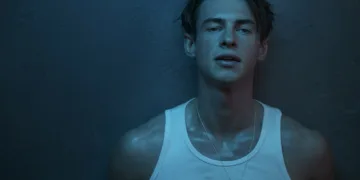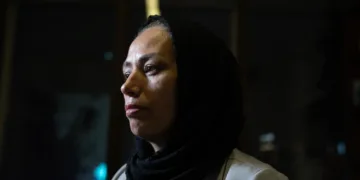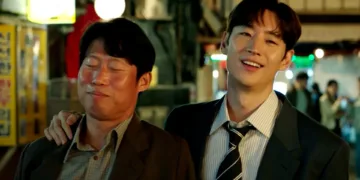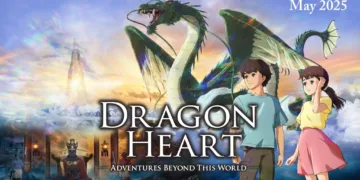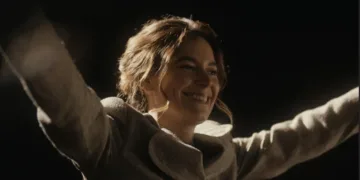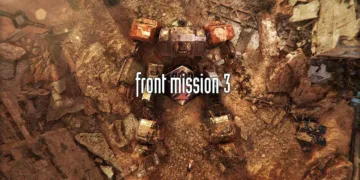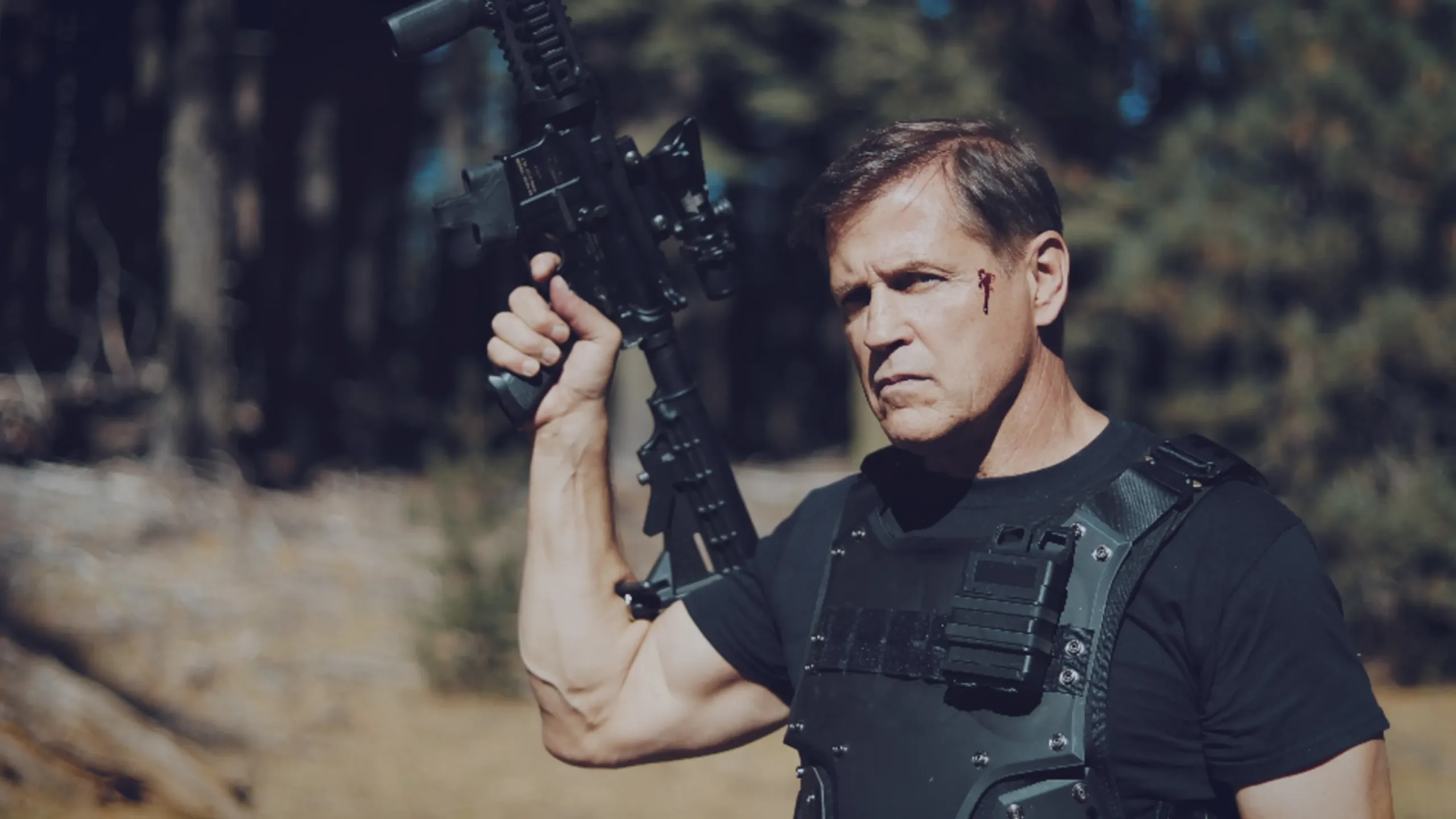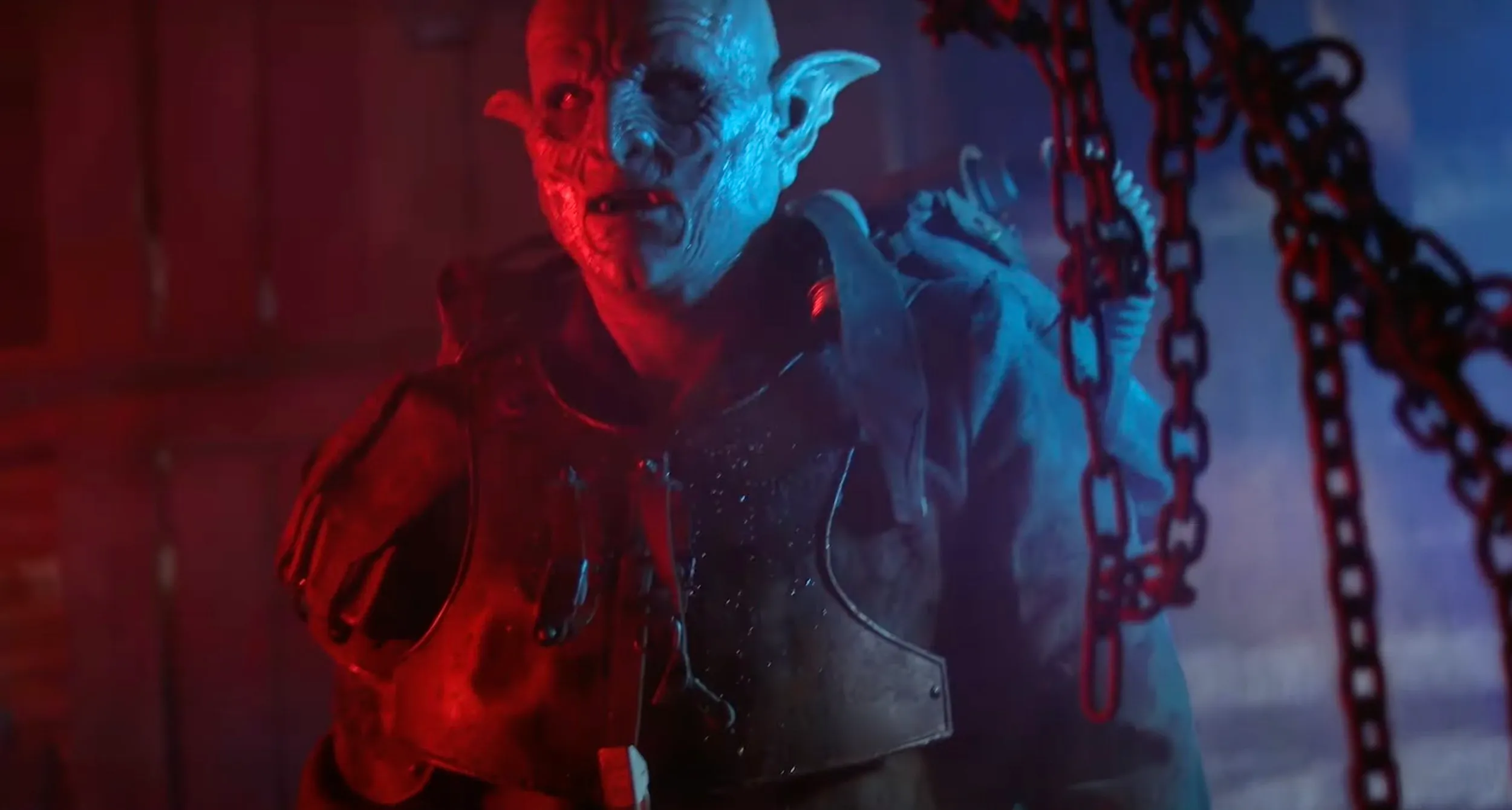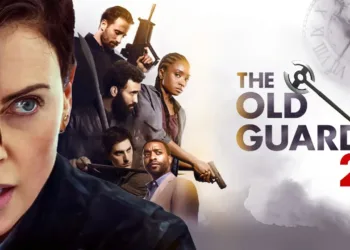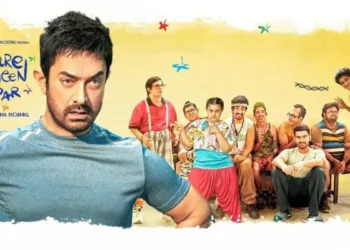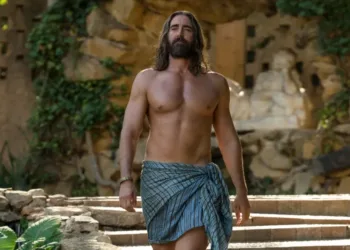The Vampire and the Vigilante, which will be released on October 22, 2024, is a fascinating addition to the contemporary horror genre. This film tells a story that feels both classic and refreshingly new. It was directed by Rene Perez, who is known for his ability to combine genre conventions with creative plots.
Natalie is a young woman in a terrible situation at the story’s center. She is desperately trying to get money for her grandmother’s life-saving medicine. Without realizing it, she is caught in a dangerous web made by the Siren, a predatory siren, and the Master, a cruel vampire in charge of her.
We meet Gabriel, the vigilante, as Natalie becomes the next target in this scary game of cat and mouse. His never-ending quest to eradicate evil from the world is intertwined with Natalie’s fate, creating a narrative full of tension and moral complexity.
This film explores the survival of its characters and the larger cultural fears surrounding justice and survival in a dangerous world.
Characters in Shadows: A Deep Dive into The Vampire and the Vigilante
Natalie’s character arc is striking, showing how she goes from being vulnerable to being empowered, embodying a contemporary reflection of the struggles many young women face today. She starts out as needy and needs money for her grandmother’s medicine, but she quickly gets caught up in a darker world.
She grapples with betrayal, fear, and, eventually, a growing strength as the narrative progresses. Viewers can feel Whitcomb’s anxiety and drive thanks to her performance, which beautifully captures this transformation. Natalie represents the delicate balance between survival and innocence, making her a relatable figure in a world that is becoming increasingly chaotic.
A rich layer of moral depth is added to the film by Michael Paré’s Gabriel. As a vigilante with his own rules, he is an important contrast to Natalie’s journey. Paré gives the character depth by showing a guy who is changed by past traumas and a never-ending search for justice. His relationships with Natalie are very important because they show how protective he is and how emotionally connected their lives are.
This connection drives both characters, showing how their fights against outside forces are similar to their inside fights. Gabriel’s moral ambiguity makes us wonder about justice and revenge, similar to a larger talk in society about the effectiveness of conventional systems.
As a literal and figurative dark force, The Master, as portrayed by Tony Jackson, embodies the classic bad guy in this narrative. He is very big and powerful, and the Siren and the chaos around him obey him. Jackson gives the characters just the right amount of danger and charm, making them both disgusting and interesting.
As he and the Siren work out their mutually beneficial partnership, themes of manipulation and power arise. This interplay makes the horror parts scarier and criticizes how men and women are portrayed in the horror genre. Making The Master a compelling figure within the film’s larger commentary, his character is a reflection of societal anxieties surrounding power and control.
Through these characters, The Vampire and the Vigilante engages with classic horror tropes and encourages viewers to reflect on contemporary issues, making it a richly layered narrative experience.
Dark Reflections: Thematic Depth in The Vampire and the Vigilante
At its core, The Vampire and the Vigilante explores the murky waters of vigilante justice and morality, creating an interesting conversation about vigilante justice’s effectiveness versus the legal system’s flaws. The vigilante Gabriel embodies a character motivated by a personal code shaped by loss and a desire for revenge. Questioning the morality of breaking the law on your own is what his acts do.
This theme resonates strongly in today’s culture, where many people struggle with frustrations over systematic failures in justice. The film doesn’t shy away from showing Gabriel’s moral problems, making viewers think about what his decisions mean. Is he a hero, or does he become the worst thing he wants to stop? This gray area provides fertile ground for conversation and reflects a larger societal concern about authority and justice.
Both physically and mentally, Natalie’s journey is characterized by profound transformation. Her identity gets more complicated as she goes from being a normal young woman to a vampire stuck in a dangerous game. This transformation is a metaphor for the bigger problems people face when they are put in tough situations. What does it mean to be human in a world full of darkness?
It makes you think about your sense of self. Natalie grapples with her new identity while navigating the scary reality of her situation, and the psychological effects of her transformation are obvious. This investigation of identity is reminiscent of old movies that look into the human mind, like François Truffaut’s, who was a master at showing characters in flux.
The Vampire and the Vigilante entertain viewers while encouraging them to reflect on their values and the social structures that influence how we perceive justice and identity. This film is a cultural artifact, evoking contemporary anxieties while offering a novel take on well-worn horror conventions.
A Dance of Shadows: Cinematic Execution in The Vampire and the Vigilante
Rene Perez’s direction in The Vampire and the Vigilante shows that he knows a lot about following genre rules while pushing them to their limits. His skill at balancing moments of tension with character-driven storytelling creates an interesting viewing experience. Perez uses a deliberate pacing that reflects the ups and downs of the narrative, allowing for both exciting buildups and reflective moments.
The audience is kept interested by this rhythmic style, making them feel the consequences of each character’s choices. It’s reminiscent of the pacing in old-school neo-noir films, where each scene builds suspense. Perez manages to elevate the narrative beyond simple shock value by grounding the horror elements in emotional stakes, enticing viewers to follow the characters on their journeys.
The film’s cinematography is one of its best features; it was skillfully made to add to the mood and tension of the story. A haunting mood is created by low-key lighting and sharp contrasts, which go well with the film’s themes. Carefully chosen camera angles show Natalie’s inner turmoil through close-ups of her face, while wider shots of the gothic settings stress how alone and dangerous she feels inside.
The interplay of light and shadow draws the audience deeper into the narrative, creating a visual language that increases suspense. Handheld shots at key moments add a sense of urgency, making viewers feel like they are right there with the characters in their dangerous situations.
In addition to serving the horror genre, the cinematography reflects contemporary sensibilities, finding a balance between unique style and broad appeal. It demonstrates an artistic vision reminiscent of the stylistic innovations of film directors like Godard or contemporary auteurs like Greta Gerwig, who use visual storytelling to increase emotional resonance. Every frame of The Vampire and the Vigilante demonstrates how effective cinema can be for storytelling and artistic expression.
Crafting Atmosphere: Aesthetic Choices in The Vampire and the Vigilante
The Vampire and the Vigilante’s aesthetic choices are crucial to setting the mood and enhancing the narrative. The Master’s lair is a striking mirror of his character—a mix of wealth and decay that makes you feel scared and drawn to it.
With its industrial yet gothic elements, the set design creates a mood that feels cramped and grand, reminiscent of old horror films where the setting becomes a character. The film is grounded in a relatable reality before it descends into chaos by contrast, with daily settings like Natalie’s apartment being purposefully boring.
Costume design adds even more to how characters are shown. The film follows Natalie’s transformation from innocence to a more complicated identity as she changes her clothing. As she gets used to the darker parts of her new life, the simple, useful clothes she started in give way to more revealing ones. This change reflects her internal conflict and criticizes societal ideals of femininity, a theme that resonates in contemporary cinema.
The film does a great job of balancing real and computer-generated effects when it comes to visual effects. The practical effects, especially during violent moments, feel raw and visceral, enhancing the emotional stakes of the narrative. This decision resonates with the style of independent cinema, where realness frequently wins over digital gloss. The movie has some CGI parts, mostly in the more supernatural scenes, but they don’t take over from the real effects.
These aesthetic choices greatly enhance the film’s mood, transporting viewers to a world that is both familiar and scary. The combination of carefully chosen settings and thoughtful costume design improves the visual storytelling and encourages more in-depth reflections on the characters’ journeys, reminiscent of the rich visual tapestries created by filmmakers like Truffaut and contemporary artists like Noah Baumbach.
Shadows and Substance: The Overall Impact of The Vampire and the Vigilante
The Vampire and the Vigilante is a film that deeply resonates with viewers’ emotions and transports them to the terrifying journeys of its characters. As Natalie grapples with her transformation and the moral difficulties of her position, the film skillfully captures her plight and elicits empathy.
The emotional weight of her decisions, especially the sacrifices she makes, sticks with people, making them think about what they think about justice and survival. Gabriel’s life as a vigilante adds another layer of psychological complexity because his reasons for doing what he does are hard to pin down. This tension encourages viewers to reflect on the more general implications of taking justice into one’s own hands, a theme that resonates strongly in today’s society, where frustrations with institutional failures are ever-present.
The film’s best features are the narrative structure and character growth. Horror and emotional depth are mixed to make it stand out from other horror movies, making it an interesting addition to the vampire series. The aesthetic decisions improve the storytelling and transport viewers to a world that feels both familiar and horrifyingly alien. But there are a few moments when the pace slows down a bit, especially in the middle act, which could use tighter editing to keep things moving.
The Vampire and the Vigilante is an excellent example of a contemporary horror story that looks at contemporary anxieties. It successfully blends aspects of independent cinema with mainstream appeal, presenting a novel take on genre tropes. There is a tantalizing possibility for sequels that could go deeper into the rich thematic ground set out in this film because the ending leaves a lot of room for interpretation. I love how cinema can be new and different, so I can’t wait to see where Perez takes these characters next. I hope there is more that goes deeper into the moral maze that is shown here.
The Review
The Vampire and the Vigilante
The Vampire and the Vigilante combines horror and emotional depth, offering a new angle on vigilante justice and identity transformation. Rene Perez's direction, strong performances, and striking visuals create an engaging narrative that resonates with contemporary cultural anxieties. The film's unique storytelling and deep character arcs make it a standout entry in the genre, even though the pace could be tightened in some places. Inviting viewers to reflect on morality and survival, this film entertains while also stimulating thought.
PROS
- Engaging character development, particularly with Natalie and Gabriel.
- Strong emotional and psychological depth.
- Innovative storytelling that blends horror with moral complexity.
- Striking cinematography and effective use of practical effects.
- Relevant commentary on contemporary societal issues.
CONS
- Pacing issues in the middle act.
- Some CGI effects feel less impactful compared to practical ones.
- Certain plot points may feel predictable to genre fans.













